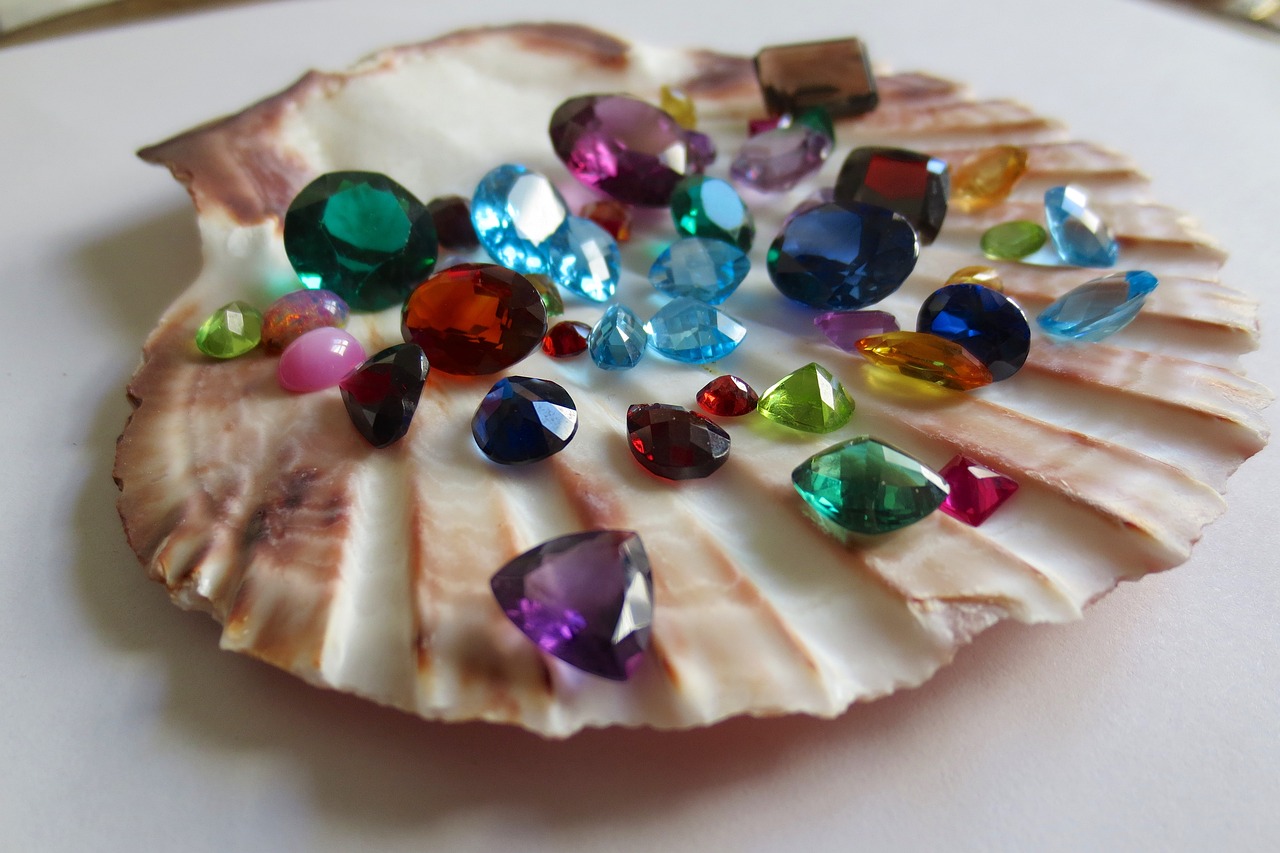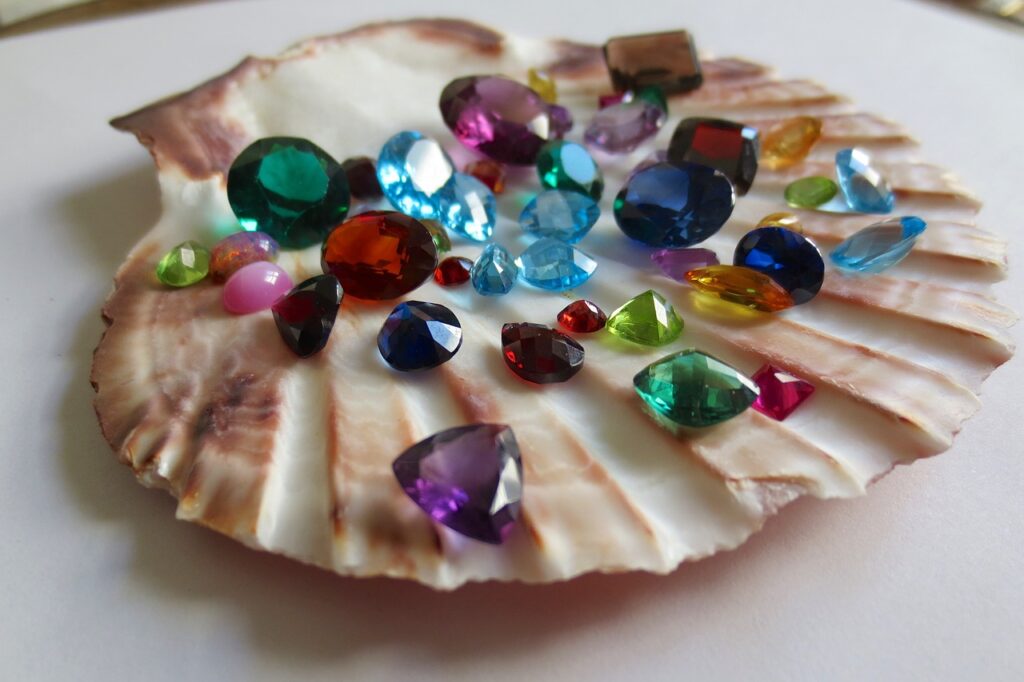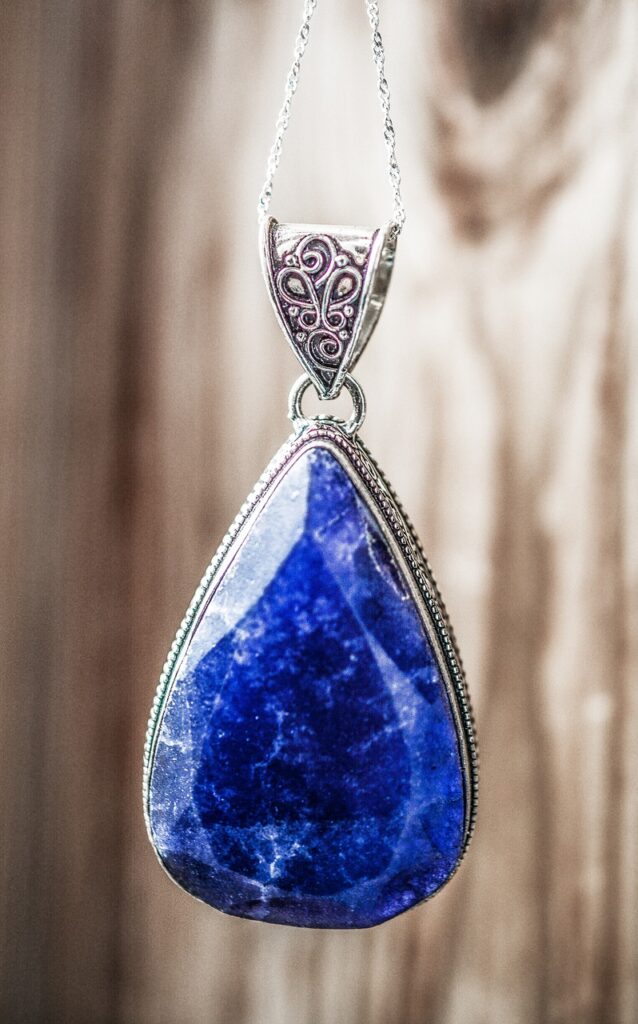
Have you ever wondered how to choose the perfect sapphire? Look no further! In this comprehensive guide, you will discover everything you need to know about buying sapphires. From the factors to consider when selecting a sapphire, to the different types and colors available, we will help you navigate the world of sapphire buying with confidence. Whether you are a first-time buyer or a seasoned collector, this ultimate guide will arm you with the knowledge you need to make an informed decision and find the sapphire of your dreams. So, let’s embark on this sparkling journey together and uncover the secrets to finding the perfect sapphire for you.

Understanding Sapphires
What are Sapphires?
Sapphires are one of the most precious gemstones known for their stunning beauty and durability. They belong to the corundum family, which also includes rubies. While rubies get their vibrant red color from the presence of chromium, sapphires come in a range of mesmerizing colors, other than red. In fact, sapphires are most commonly associated with the color blue, but they can also be found in pink, yellow, green, purple, and even colorless variations. Sapphires have been admired and desired for centuries, and their allure continues to captivate jewelry enthusiasts around the world.
Different Colors of Sapphires
When most people think of sapphires, the beautiful blue hue comes to mind. However, sapphires exist in a diverse palette of colors. The variations in color are primarily due to the presence of different chemical elements during the gem’s formation process. For instance, blue sapphires derive their color from trace amounts of iron and titanium, while pink sapphires owe their hue to the element chromium. Yellow sapphires feature iron impurities, while green sapphires obtain their color from the presence of iron and titanium. The range of colors in which sapphires can be found makes them versatile and suitable for a variety of jewelry designs.
Factors Influencing Sapphire Quality
Several factors determine the quality of a sapphire, making each gem unique and valuable. The key factors that influence sapphire quality are color, clarity, cut, and carat weight. The interplay of these characteristics determines the overall beauty and value of a sapphire. It is essential to understand these factors to make an informed decision when purchasing a sapphire.
Types of Sapphires
Natural Sapphires
Natural sapphires are formed through natural processes within the Earth’s crust over millions of years. They are the most sought-after and highly valued due to their rarity and unique characteristics. Natural sapphires often exhibit exquisite color saturation and clarity, making them highly desirable for jewelry. Their authentic origin and natural beauty make them a symbol of luxury and elegance.
Lab-Created Sapphires
Lab-created sapphires, also known as synthetic or man-made sapphires, are created in a laboratory environment using advanced techniques that mimic the natural formation process. These sapphires possess the same physical and chemical properties as natural sapphires. While lab-created sapphires may lack the rarity and historical significance of natural sapphires, they offer an affordable and sustainable alternative. Lab-created sapphires provide an opportunity to own a beautiful gemstone without compromising on quality or aesthetics.
Determining Sapphire Quality
Color
Color is one of the most crucial factors when assessing the quality of a sapphire. The ideal color of a sapphire is highly subjective and varies depending on personal preferences. However, professional gemologists evaluate sapphires based on criteria such as hue, tone, and saturation. While hue refers to the dominant color of the stone, tone determines the darkness or lightness of the color. Saturation, on the other hand, measures the intensity or purity of the color. A high-quality sapphire exhibits a vibrant and well-saturated color with a desirable tone.
Clarity
Clarity refers to the presence of internal or external imperfections, known as inclusions and blemishes, in a sapphire. These imperfections can affect a sapphire’s overall beauty and brilliance. The Gemological Institute of America (GIA) uses a clarity grading scale to assess the visibility and impact of these imperfections on a sapphire’s appearance. The highest-quality sapphires are characterized by exceptional clarity, devoid of visible inclusions or blemishes, allowing maximum light to reflect within the stone.
Cut
The cut of a sapphire refers to the way it has been shaped and faceted by a skilled lapidary. A well-cut sapphire optimizes light reflection and enhances its overall brilliance. The cut determines the stone’s proportions, symmetry, and polish. Various popular cuts, such as round brilliant, princess, and emerald cuts, are utilized to showcase a sapphire’s unique color and maximize its visual appeal. A well-cut sapphire should display excellent symmetry, proportion, and polish, giving it a captivating sparkle and fire.
Carat Weight
Carat weight measures the size and weight of a sapphire. Larger sapphires are generally more rare and, therefore, more valuable. However, carat weight should not be the sole factor in determining a sapphire’s quality. The other three factors, color, clarity, and cut, greatly influence a sapphire’s overall beauty and value. It is crucial to strike a harmonious balance between carat weight and the other quality factors when selecting a sapphire.
Sapphire Treatments
Heating
Heating is a common treatment applied to sapphires to enhance their color and clarity. Heat treatment involves subjecting the gemstone to high temperatures to diffuse impurities and improve its overall appearance. Many natural sapphires are treated using this method to intensify their color and remove unwanted inclusions, resulting in a more visually appealing gem.
Beryllium Treatment
Beryllium treatment is a process used to alter the color of sapphires. It involves diffusing beryllium into the gemstone, which results in vibrant and intense colors that might not be naturally occurring. While this treatment can produce strikingly beautiful sapphires, it is essential to disclose such treatments to maintain transparency and authenticity in the gem trade.
Diffusion Treatment
Diffusion treatment is another method employed to enhance the color of sapphires. In this process, the sapphire is heated and infused with additional colors to achieve a more desirable hue. While diffusion treatment can produce appealing results, it is crucial to ensure that the treatment is disclosed accurately, allowing consumers to make informed buying decisions.
Surface Coating
Surface coating involves applying a thin layer of coloring substance to the surface of a sapphire to alter its appearance. This treatment is generally considered less desirable since the coating can wear off over time, affecting the gemstone’s color and overall beauty. It is crucial to be aware of surface coatings and avoid purchasing coated sapphires if long-term value and integrity are a priority.
Synthetic Fillers
Synthetic fillers, such as glass or resin, are sometimes used to fill in surface-reaching fractures or cavities within a sapphire. These fillers enhance the gemstone’s clarity and overall appearance. While this treatment can improve a sapphire’s visual appeal, it is essential to disclose the presence of fillers to ensure transparency and maintain the gemstone’s long-term value.

Certifications and Authenticity
Gemological Institutes
Gemological institutes, such as the Gemological Institute of America (GIA), play a crucial role in certifying and assessing the authenticity, quality, and characteristics of gemstones, including sapphires. These independent organizations employ rigorous testing methods and grading systems to evaluate sapphires’ color, clarity, cut, and carat weight. Purchasing a certified sapphire from a reputable gemological institute can provide confidence in the gem’s authenticity and quality.
Certification Process
The certification process involves an in-depth examination of a sapphire by experienced gemologists. The gemstone is meticulously evaluated, and its characteristics are documented in a comprehensive report. This report, often referred to as a grading report or certificate, provides detailed information about the sapphire’s color, clarity, cut, carat weight, and any treatments it may have undergone. Certification adds value to a sapphire, as it confirms its authenticity and quality.
Authenticity Verification
To ensure the authenticity of a sapphire, it is recommended to purchase from reputable and trusted sources. Reputable jewelers often provide certificates of authenticity or third-party grading reports with their sapphires, confirming their genuine nature. Additionally, seeking professional appraisals or consulting gemologists can help verify a sapphire’s authenticity and determine its value.
Sourcing Sapphires
Mining Locations
Sapphires are mined in numerous locations around the world. Some of the prominent mining locations include Sri Lanka, Madagascar, Australia, Myanmar (Burma), and Thailand. Each mining location produces sapphires with distinct characteristics in terms of color, quality, and availability. Understanding the mining origins can add to the story and allure of a sapphire, making it a more meaningful and unique gemstone.
Ethical Sourcing
Ethical sourcing of gemstones, including sapphires, ensures that the gems are obtained responsibly and without causing harm to people or the environment. It involves fair labor practices, adherence to human rights regulations, and environmental sustainability. Jewelers who prioritize ethical sourcing work closely with mining communities to create a positive impact and ensure transparency and responsibility throughout the supply chain.
Sustainably Sourced Options
In recent years, sustainable sourcing of gemstones has gained significant importance. Sustainably sourced sapphires focus on minimizing environmental impact, ensuring fair trade practices, and supporting the well-being of mining communities. Additionally, recycled or antique sapphires provide an eco-friendly and sustainable alternative to newly mined gemstones. These options allow conscious consumers to enjoy the beauty of sapphires while minimizing their carbon footprint.

Popular Sapphire Cuts
Round Brilliant Cut
The round brilliant cut is one of the most popular and timeless cuts for sapphires. This cut features a round shape with multiple facets, maximizing the gemstone’s brilliance and sparkle. Its symmetrical design highlights the sapphire’s color and allows for versatile jewelry designs.
Princess Cut
The princess cut showcases a square or rectangular shape with clean, straight lines. This cut maximizes the sapphire’s brilliance and preserves more carat weight compared to round brilliant cuts. Princess-cut sapphires are often set in engagement rings or as accent stones to create a striking display of color.
Cushion Cut
The cushion cut is a classic and elegant choice for sapphires. This cut features a square or rectangular shape with rounded corners, resembling a pillow or cushion. The cushion cut combines the brilliance of a round cut with soft edges, creating a romantic and captivating look.
Emerald Cut
The emerald cut is characterized by a rectangular shape with step-cut facets that create a hall-of-mirrors effect. This cut highlights the sapphire’s clarity and color, making it an excellent choice for those who appreciate a sophisticated and timeless design.
Oval Cut
The oval cut features an elongated shape with rounded edges, showcasing the sapphire’s color and brilliance. The oval shape is versatile and flattering, making it an ideal choice for various jewelry styles, from solitaire rings to pendants.
Pear Cut
The pear cut, also known as a teardrop cut, combines the elegance of a round cut with the unique shape of a marquise cut. This cut features a rounded end that tapers to a point, resembling a drop of water. Pear-cut sapphires are often used in earrings and pendants, creating a graceful and eye-catching look.
Marquise Cut
The marquise cut is long and narrow with pointed ends, resembling a boat or a football. This cut creates a distinct and elongating effect on the finger, making it a popular choice for engagement rings. Marquise-cut sapphires deliver a unique and bold statement.
Radiant Cut
The radiant cut combines the brilliance of a round cut with the trimmed corners of an emerald cut. This cut features rectangular or square shapes, making it an excellent choice for those who desire a mix of traditional and modern aesthetics. The radiant cut enhances the sapphire’s color and provides exceptional sparkle.
Asscher Cut
The Asscher cut exudes vintage-inspired charm and features a square shape with step-cut facets. This cut enhances the sapphire’s color and clarity, giving it a timeless and sophisticated appeal. Asscher-cut sapphires are captivating and make a statement in various jewelry designs.
Heart Cut
The heart cut represents love and romance. This cut features a unique heart shape with a curved top and two pointed ends. Heart-cut sapphires are often used in special jewelry pieces, such as engagement rings or pendants, symbolizing love and affection.
Understanding Sapphire Pricing
The Four Cs
The pricing of sapphires, like most gemstones, is determined by the four Cs: color, clarity, cut, and carat weight. Each of these factors influences the value of a sapphire, with color being one of the most significant determinants. Highly saturated and desirable colors, such as vivid blue, pink, or yellow, command higher prices. Clarity also plays a role, as sapphires with minimal or no inclusions are more highly valued. The cut affects the sapphire’s brilliance and overall beauty, while carat weight influences its size and rarity.
Additional Factors Affecting Price
In addition to the four Cs, several other factors can influence the price of a sapphire. The origin of the sapphire can have an impact, as certain mining locations are renowned for producing exceptional sapphires with unique qualities. Rarity is another significant factor, as sapphires with unusual colors or exceptional characteristics are often more sought after and, therefore, more valuable. Likewise, highly transparent and well-cut sapphires tend to command higher prices. Rarity, uniqueness, and quality all contribute to the pricing of sapphires, making each gemstone a one-of-a-kind investment.

Choosing the Right Sapphire
Personal Style and Preference
When choosing a sapphire, it is important to consider personal style and preference. Since sapphires come in various colors and cuts, selecting one that resonates with your individual taste ensures a meaningful and cherished gem. Whether you prefer a classic blue sapphire, an eye-catching pink sapphire, or a unique colored sapphire, finding a gem that speaks to you is key.
Occasion and Usage
The occasion and intended use of a sapphire should also be taken into account when making a selection. For example, a sapphire engagement ring typically calls for a larger and more striking gemstone, while smaller sapphires can be suitable for everyday wear or as accent stones in jewelry pieces. Understanding how and where the sapphire will be worn allows for a more tailored and appropriate choice.
Budget Considerations
Establishing a budget is vital when purchasing a sapphire. Sapphires come in a wide price range, depending on factors such as color, clarity, cut, carat weight, and origin. Consideration should be given to the desired quality and characteristics within your budget to ensure a satisfying and worthwhile purchase. Consulting with a reputable jeweler and utilizing gem certifications can help navigate the available options and select a sapphire that offers both value and visual appeal.
Sapphire Care and Maintenance
Cleaning and Storage
To keep a sapphire looking its best, regular cleaning and proper storage are essential. Sapphires can be cleaned using a solution of warm water and mild soap. Gently scrub the gem with a soft brush, rinse thoroughly, and pat dry using a lint-free cloth. It is recommended to avoid ultrasonic cleaners, as they can cause damage to certain treatments or filled sapphires. When not being worn, sapphires should be stored separately from other gemstones and jewelry to prevent scratches.
Avoiding Damage
While sapphires are relatively durable gemstones, they are not entirely resistant to damage. To avoid scratches or chips, it is advisable to remove sapphire jewelry when engaging in activities that may expose the gem to impact. Additionally, sapphires should be protected from harsh chemicals, including household cleaning agents or chlorine, which can affect the gem’s color or clarity.
Professional Services
Periodic professional inspections and maintenance by a trusted jeweler are recommended to ensure the long-term beauty and integrity of a sapphire. Professional jewelers can examine the gemstone, check for loose settings or damage, and provide necessary repairs or cleaning. Proper care and maintenance will help preserve the sapphire’s beauty and ensure it continues to dazzle for generations to come.
In conclusion, sapphires are captivating gemstones that offer an array of colors, cuts, and qualities. Understanding the factors that determine sapphire quality, recognizing various treatments and certifications, and considering personal preferences and budget will guide you in choosing the perfect sapphire. With proper care and maintenance, a sapphire can become a cherished piece of jewelry, symbolizing beauty, elegance, and lasting value. Choose with confidence, and embrace the timeless allure of sapphires.


